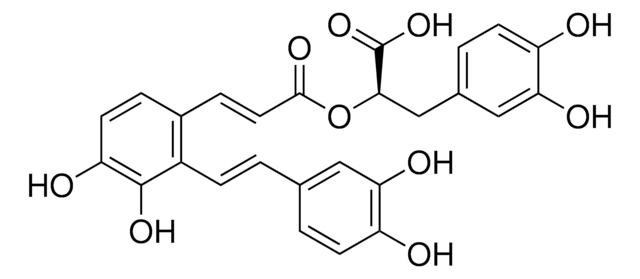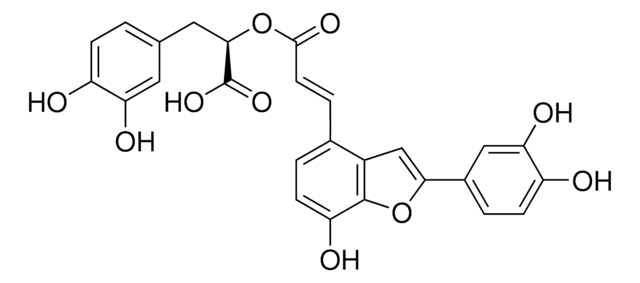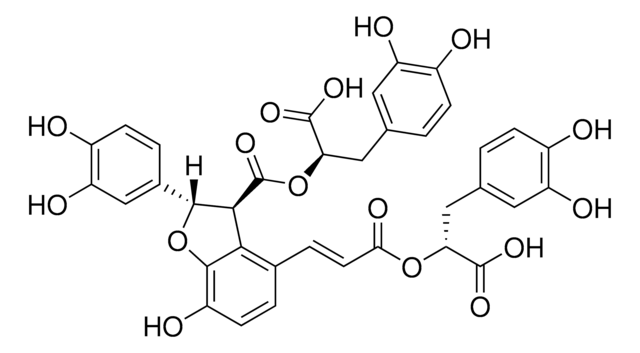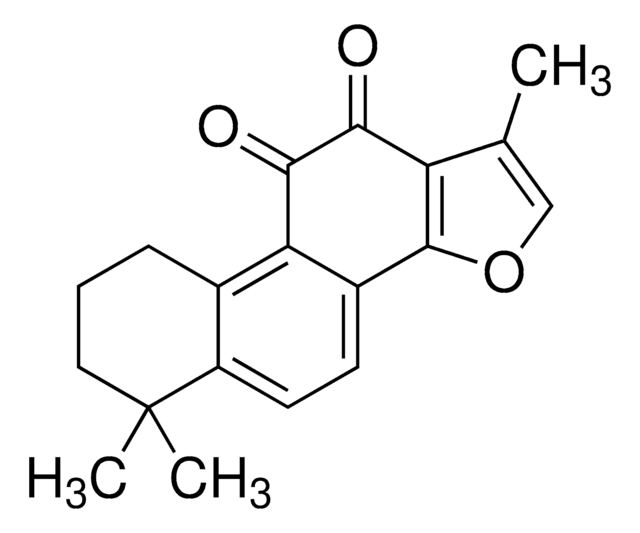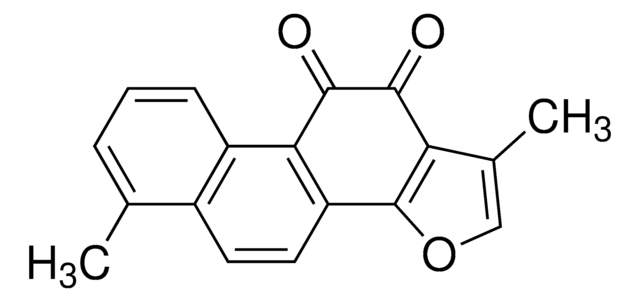SML0045
Salvianolic acid A hydrate
≥98% (HPLC)
Synonym(e):
Dan phenolic acid A hydrate
About This Item
Empfohlene Produkte
Assay
≥98% (HPLC)
Form
powder
Farbe
yellow
Löslichkeit
H2O: ≥19 mg/mL
Versandbedingung
wet ice
Lagertemp.
−20°C
SMILES String
O.OC(=O)[C@@H](Cc1ccc(O)c(O)c1)OC(=O)\C=C\c2ccc(O)c(O)c2\C=C\c3ccc(O)c(O)c3
InChI
1S/C26H22O10.H2O/c27-18-7-2-14(11-21(18)30)1-6-17-16(4-9-20(29)25(17)33)5-10-24(32)36-23(26(34)35)13-15-3-8-19(28)22(31)12-15;/h1-12,23,27-31,33H,13H2,(H,34,35);1H2/b6-1+,10-5+;/t23-;/m1./s1
InChIKey
XFUSRNNWIRPEDG-FYLUTCCGSA-N
Anwendung
Salvianolic acid A hydrate has been used as rosmarinic acid derivative for the inhibition of DNA polymerase e in human cell lines.
Biochem./physiol. Wirkung
Lagerklassenschlüssel
13 - Non Combustible Solids
WGK
WGK 3
Flammpunkt (°F)
Not applicable
Flammpunkt (°C)
Not applicable
Analysenzertifikate (COA)
Suchen Sie nach Analysenzertifikate (COA), indem Sie die Lot-/Chargennummer des Produkts eingeben. Lot- und Chargennummern sind auf dem Produktetikett hinter den Wörtern ‘Lot’ oder ‘Batch’ (Lot oder Charge) zu finden.
Besitzen Sie dieses Produkt bereits?
In der Dokumentenbibliothek finden Sie die Dokumentation zu den Produkten, die Sie kürzlich erworben haben.
Kunden haben sich ebenfalls angesehen
Unser Team von Wissenschaftlern verfügt über Erfahrung in allen Forschungsbereichen einschließlich Life Science, Materialwissenschaften, chemischer Synthese, Chromatographie, Analytik und vielen mehr..
Setzen Sie sich mit dem technischen Dienst in Verbindung.